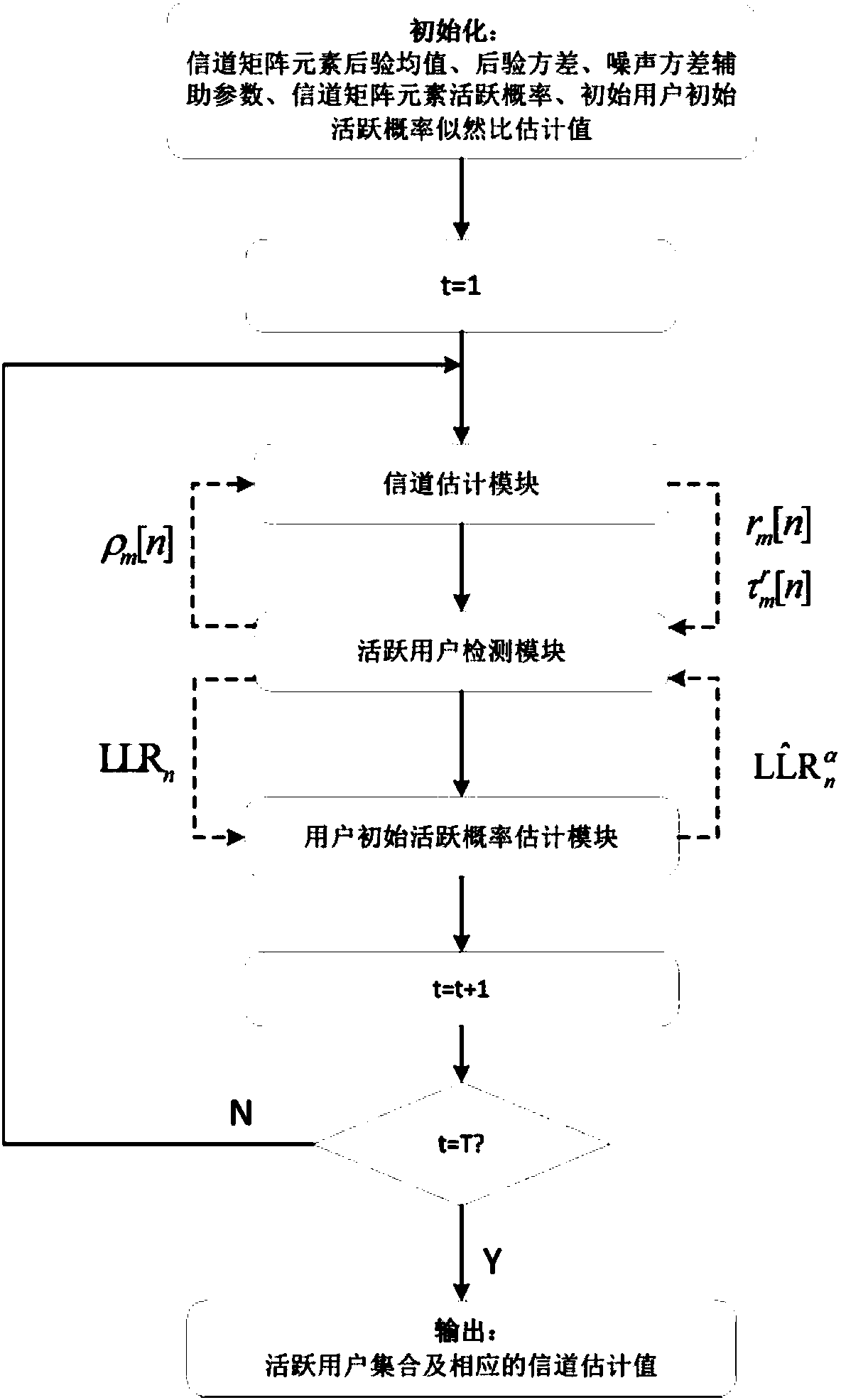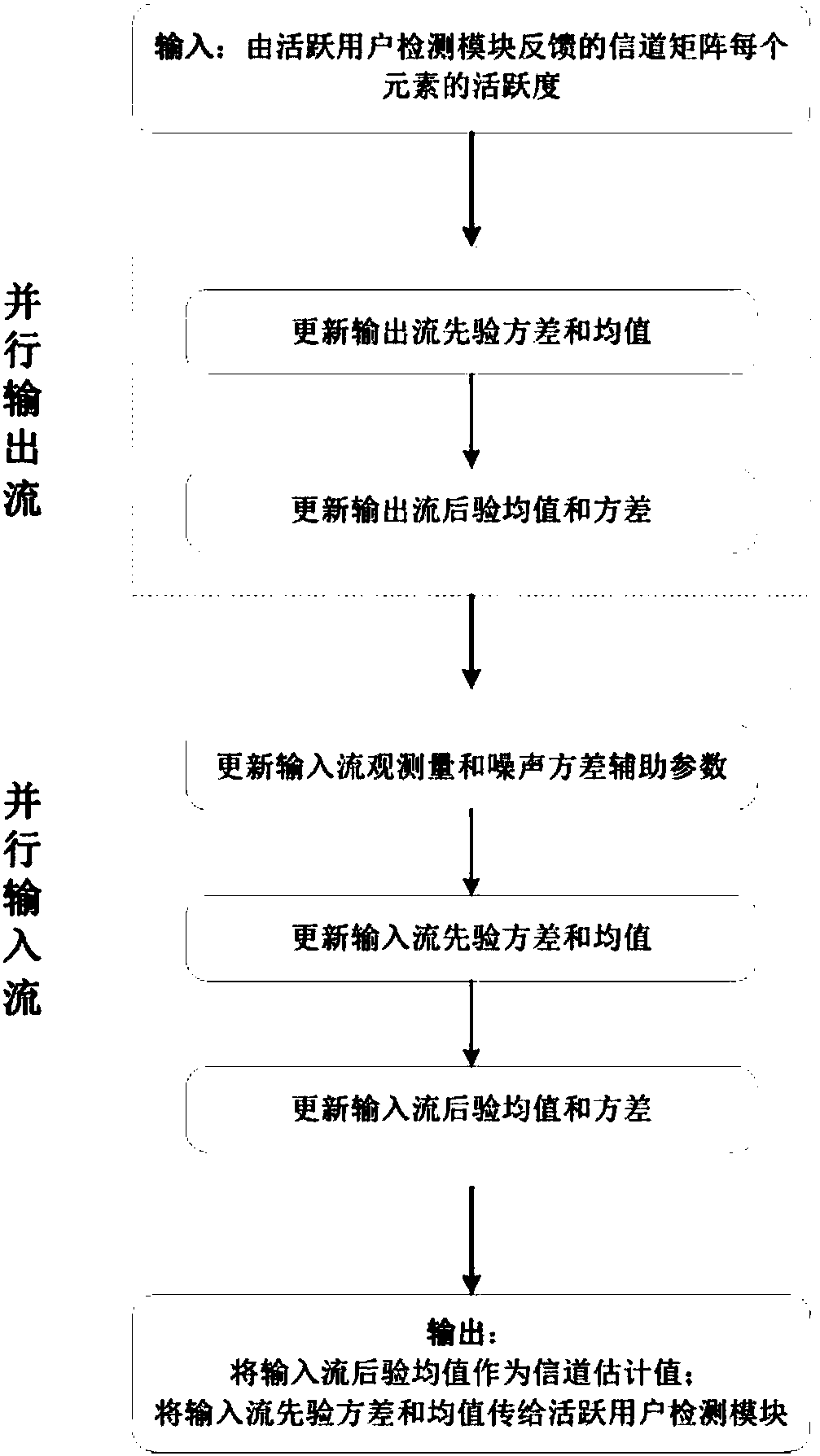Joint active user detection and channel estimation method of dispatching-free transmission system
A technology of active user and scheduled transmission, which is applied in the field of joint active user detection and channel estimation in a scheduling-free transmission system, and can solve high-complexity problems
- Summary
- Abstract
- Description
- Claims
- Application Information
AI Technical Summary
Problems solved by technology
Method used
Image
Examples
Embodiment Construction
[0064] The technical solution of the present invention will be further introduced below in combination with specific embodiments.
[0065] In this specific implementation manner, a scheduling-free transmission system is considered, and uplink transmission does not need to request time-frequency transmission resources through a physical layer control channel, but directly sends signals according to synchronization time slots in a pre-allocated conflict domain. It is assumed that the signals sent by the same user in adjacent frames are independent of each other, and whether different users send signals are independent of each other. Assuming that the number of antennas at the base station is M, and the number of online users is N, whether each user sends a signal follows an independent and identically distributed Bernoulli distribution. The base station does not know which users are sending data to it at the current moment, that is, it does not know the set of active users, nor ...
PUM
 Login to View More
Login to View More Abstract
Description
Claims
Application Information
 Login to View More
Login to View More - R&D
- Intellectual Property
- Life Sciences
- Materials
- Tech Scout
- Unparalleled Data Quality
- Higher Quality Content
- 60% Fewer Hallucinations
Browse by: Latest US Patents, China's latest patents, Technical Efficacy Thesaurus, Application Domain, Technology Topic, Popular Technical Reports.
© 2025 PatSnap. All rights reserved.Legal|Privacy policy|Modern Slavery Act Transparency Statement|Sitemap|About US| Contact US: help@patsnap.com



